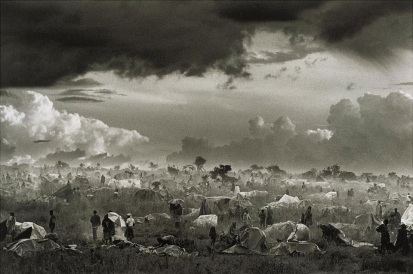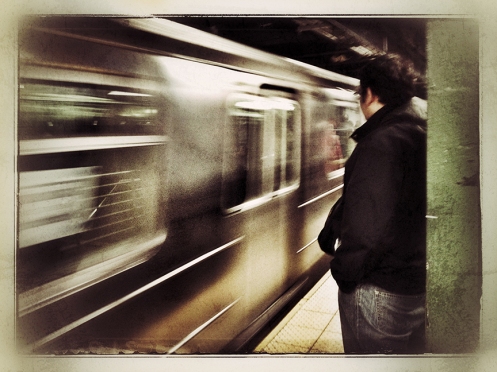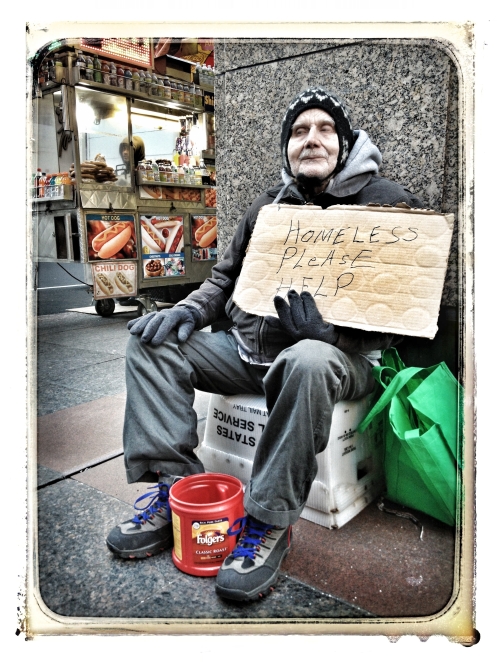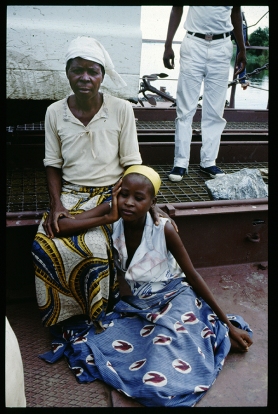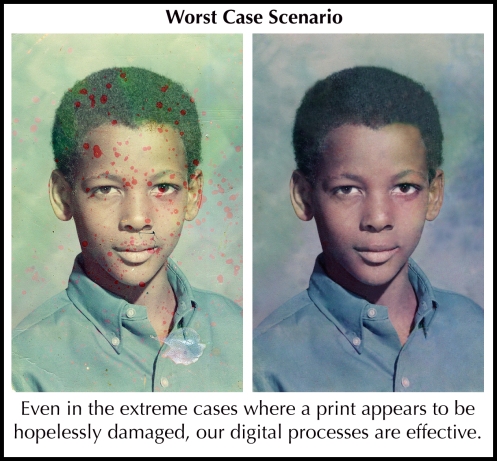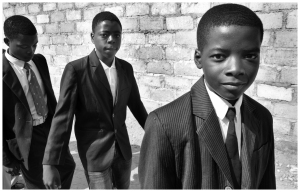Fascinating exhange (on Facebook) with my old friend and partner in crime Andrew Njoroge the other night. We came together in the early 1990s when I was running a series of photography workshops out of the French Cultural Centre in Nairobi. Andrew and I basically turned the darkroom in the FCC loft into our own thingira, and shared endless misadventures . . . . Today he is the owner of http://www.africancolours.net, an organization and website that does an excellent job of promoting African art of all stripes….
Shortly after I had left Kenya for good, Andrew began working as a videographer for Reuters. I remember hearing some horrific tales, including a night of terror when he and several others found themselves in the still-infamous Goma, surrounded by the notorious panga-wielding Hutu’s responsible for much of the worst carnage in the Rwandan Genocide. When he posted a somewhat overexposed version of this image a few days ago, I took the liberty of performing a little digital retouching, mainly just darkening some washed out areas. His reaction led to this exchange, concerning his time in Goma, and his experience working with Sebastiao Salgado:
DB: A little Photoshop magic….
AN: Coolest… now i notice i was walking without shoes and the socks were white. not sure what i was shooting at night. Thanks much, RRM (my nickname, Race Riot Man, taken from an old Lenny Bruce bit we used to laugh at)
DB: That was just after I left Kenya for the US…. was this the time you guys were surrounded by bloodthirsty Hutus?
AN: Went to Goma soo many times…Not sure if this was the time they wanted to lynch us…scares me to recall the incident… they wanted to see blood, our blood…
DB: Fuck those guys…. didn’t you also meet Salgado on one of these adventures?
AN: Yes, we hang out with Salgado for about a week in a refugee camp with half a million Hutus, mostly genocidaires. One early morning i left camp to go see where the refugees were getting water from and what an amazing sight it was. Thousands of men, women and children fetching water, bathing at a lake. It was misty and crispy, the light was glorious…It was the story of mankind right in front of my eyes. Humanity and colour sorrounded me. It was fantastic video…!!!! It was horrifying, it was beautiful. Only regret was that I did not have a camera with black and white film to record it. Had left the big boys at camp, they must have been making breakfast or something or nursing hangovers from the previous nights excesses for they needed to numb their senses to deal with what was happening. I decided that I would share the secret location with a photographer. He was Sebastio Salgado and the rest is history. Some of the most breathtaking images of his career were taken that day under my supervision and direction :))
DB: That’s an incredible story and if you will verify that it is all very true and there is no fog of war revisionist history in your startling yet believable claim that you helped guide or direct Salgado, I will share the story with others…
AN: Of course it is true….i remember very vividly what happened that day.. i was out to scoop everybody else. i had it in the bag but i was frustrated i did not have a stills camera. i decided to give the best among the group the opportunity. obviously i did not share the location with the rest. i needed to have exclusivity and wanted to see my video as the number one story in the networks i.e. cnn, bbc etc. He was shocked that i shared the spot with him… he was looking at me with disbelief.. he must have been wondering what was my motivation. I was content in the knowledge someone had recorded on film what i had not been able to do… he just happens to have been Salgado :)) I knew the pictures would be incredible and with his brand name they would become iconic…
DB: Anyway a tremendous experience you had, and a credit to your professionalism and presence of mind. That must have been incredible intense…
AN: This was that day
DB: That’s one of his? Outstanding….
AN: This was our reality, days on end for weeks at a time. We lived in our tents among half a million thugs. we even hired them to do our laundry and keep our space clean…
DB: Wild. On a Salgado web link about his time in Goma, it says “Through his work, Salgado had seen so much horror – in the Democratic Republic of the Congo, he witnessed 10,000 people die in one day in the refugee camps of Goma.”
AN: That’s a bit exagerated’. he couldn’t have possibly been able to count them. they could have been more, you know…

